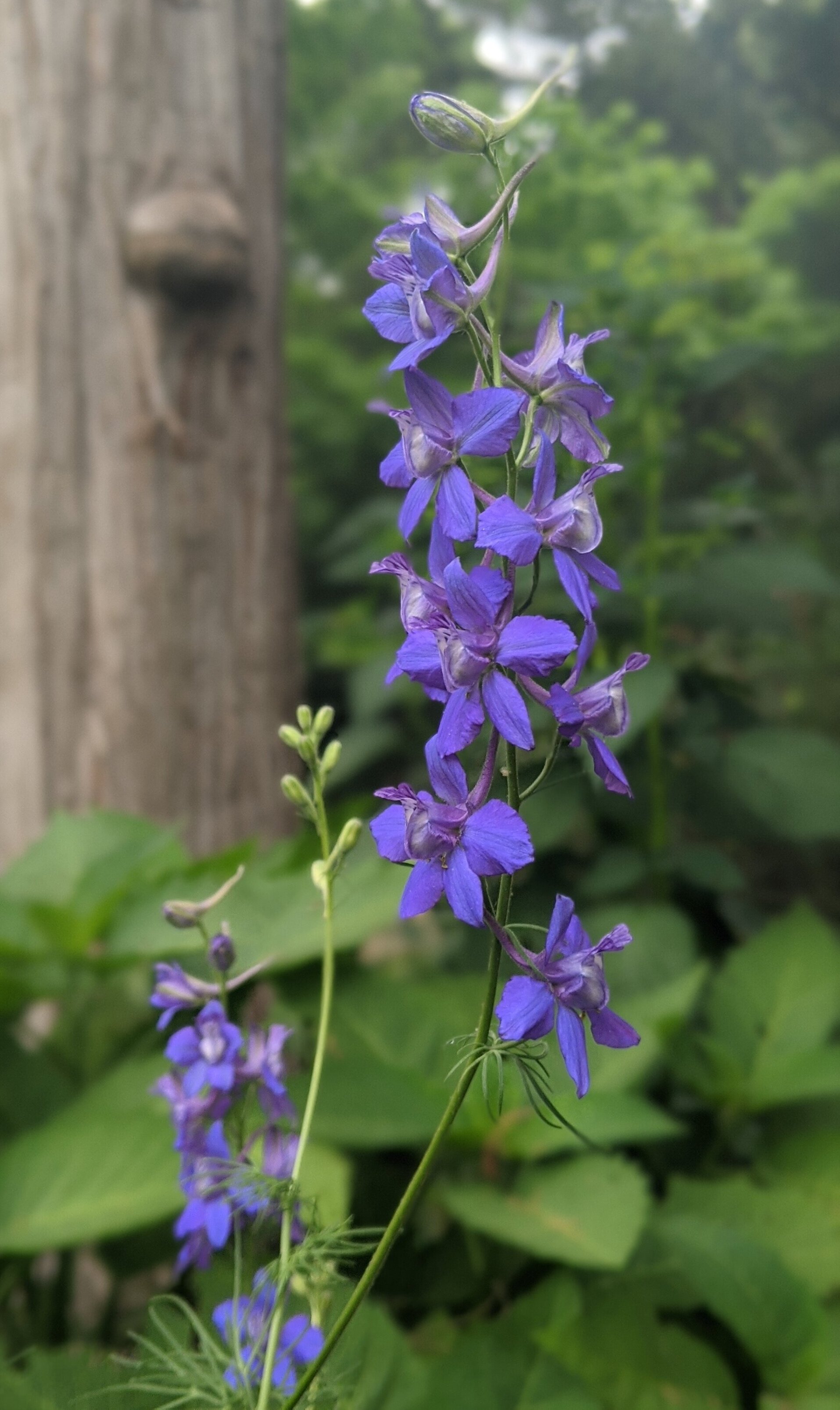Weeds, Weeding, and Planting
Weeds are here! They took the place of poppies, dianthus, nigella, and larkspur (Consolida ajacis) making this the least attractive season in our garden, and so we close for tours until fall. Because we must wait for desirable seeds to ripen to produce next year’s spring display, we slowly begin our revision of each bed. Weeds take advantage of this “slow season” and continue to grow, also ripening their seeds. Because we are always thinking of next year, collecting the seeds is an act of faith—faith that we will get good germination next fall, that spring rains will come at just the right times, and that the display will meet our expectations. We organize our favorite annuals by the color of their flowers (red, deep purple, burgundy, raspberry, blue, pink, and white)—and race the birds for the seeds.
As we collect ripe seeds, we get close to the ground to pull or dig the accompanying weeds. There is no lovelier sound than that of a weed as the soil releases its roots. This is a slow but rewarding experience, and although we cover relatively small areas, we can smell the earth, evaluate everything else which grows nearby, plan for the next stage in summer, and imagine a successful fall finale. Not everything we remove goes into the compost pile. The really pesky weeds are dumped on a brush pile which will not be recycled into the garden. As we finish section by section, we plant summer perennials, some of which are too tender to survive a winter outside and others we are growing for the first time. This gives us a chance to correct the problems of last year. The process is slow because we know the importance of remembering plants not yet above ground, e.g. bulbs which bloom later in summer, and we think critically about last year. Because our garden is organized by color and season with attention to the amount of available sun or shade, each part has its own character and problems, not the least of which are their neighboring sections. We often think we understand the design and function of the various parts best when viewed at a distance, so we step outside the garden itself and try to imagine the entire picture. By early fall, we usually realize our successes and mistakes and say to each other—well, there’s always next year.
